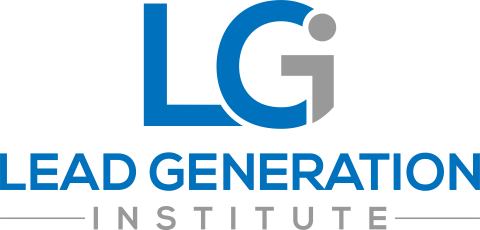In the fast-paced world of marketing, lead generation is crucial for businesses aiming to grow and succeed. As we approach 2025, understanding the latest trends and strategies in lead generation is more important than ever. This article explores innovative approaches that can help businesses effectively attract and convert potential customers, ensuring they stay ahead of the competition. From leveraging technology to personalizing outreach, these strategies will set the foundation for successful lead generation in the coming year.
Key Takeaways
- Lead generation is essential for generating revenue.
- Using AI and automation can streamline the lead generation process.
- Creating targeted content helps attract the right audience effectively.
- Personalizing communication increases engagement and conversion rates.
- Measuring key metrics is vital for optimizing your lead generation efforts.
Understanding the Evolution of Lead Generation

Historical Context and Modern Shifts
Lead generation has come a long way from traditional methods like cold calling and direct mail. In the past, businesses relied heavily on face-to-face interactions and print advertising to attract potential customers. Today, the landscape has shifted dramatically due to the rise of digital marketing and social media.
- Key changes include:
- The transition from offline to online strategies.
- Increased use of data analytics to understand customer behavior.
- The emergence of content marketing as a lead generation tool.
Impact of Technology on Lead Generation
Technology has revolutionized how businesses generate leads. With tools like CRM systems and marketing automation, companies can now track and nurture leads more effectively.
| Technology | Impact on Lead Generation |
|---|---|
| CRM Systems | Centralizes customer data for better targeting. |
| Marketing Automation | Streamlines communication and follow-ups. |
| AI Tools | Analyzes data to predict customer behavior. |
Key Challenges in 2024
As we move into 2024, businesses face new challenges in lead generation.
- Some of these challenges are:
- Increased competition in digital spaces.
- Ad fatigue among consumers due to overexposure.
- Difficulty in maintaining personalized communication at scale.
The landscape of lead generation is constantly evolving, and businesses must adapt to stay relevant.
In summary, understanding the evolution of lead generation is crucial for businesses aiming to thrive in 2025. By leveraging technology and adapting to modern shifts, companies can effectively connect with potential customers and drive growth.
Innovative Lead Generation Strategies for 2025
In 2025, businesses must adopt innovative strategies to effectively capture leads. Here are some key approaches:
Leveraging AI and Automation
- AI tools can analyze prospect behavior and company news and predict future actions, helping businesses target the right audience at the right time.
- Website visitor identification tools (identity resolution) can identify a percentage of prospects who visit your website. These people have the highest level of interest in your products and services and are more likely to convert.
- Chatbots can engage visitors on websites, answering questions and capturing information 24/7.
Intent-Based Lead Generation
- Focus on leads that show clear interest in your products or services. This means tracking user actions, such as:
- Website visits
- Content downloads
- Social media interactions
- By understanding what potential customers are looking for, you can tailor your approach to meet their needs.
Omni-Channel Marketing Approaches
- Use multiple channels to reach your audience, including:
- Social media
- Email marketing
- Webinars
- Ensure that your messaging is consistent across all platforms to reinforce your brand and engage potential leads effectively.
In a rapidly changing digital landscape, staying ahead means embracing new technologies and strategies to connect with your audience.
By implementing these innovative strategies, businesses can enhance their lead generation efforts and drive conversions in 2025.
Integrating Lead Generation with Marketing Campaigns
Integrating lead generation with your marketing campaigns is essential for achieving the best results. Here’s how to effectively combine these elements:
Aligning Goals and Metrics
- Ensure your lead generation objectives match your overall marketing goals.
- Define what a high-quality lead looks like.
- Track important metrics like lead quality, conversion rates, and cost per lead.
Creating Targeted Content
- Develop content that meets your target audience’s needs and interests.
- For example, if you’re promoting a new product, create blog posts, infographics, and webinars that highlight the product’s benefits and solutions to common problems.
- Use feedback from your audience to refine your content strategy.
Utilizing Multi-Channel Strategies
- Use various channels to reach your audience, such as social media, email, and your website.
- Ensure consistent messaging across all channels to reinforce your campaign.
- Implement lead nurturing strategies to keep potential customers engaged.
By following these best practices, you can create a natural integration between your lead generation efforts and marketing campaigns. This approach not only enhances your outreach but also builds stronger connections with your audience.
The Role of Content Marketing in Lead Generation
Content marketing plays a crucial role in attracting and converting leads. By providing valuable information, businesses can engage potential customers and guide them through their buying journey.
Creating High-Quality Content
- Focus on producing high-quality content that addresses the needs of your audience.
- Use various formats like blog posts, videos, and infographics to reach different segments of your audience.
- Ensure your content is relevant and consistent to build trust and authority in your industry.
SEO and Lead Generation
- Optimize your content for search engines to increase visibility and attract organic traffic.
- Use keywords that your target audience is searching for to improve your chances of being found.
- Regularly update your content to keep it fresh and relevant, which can help maintain your search rankings.
Engaging Through Social Media
- Share your content on social media platforms to reach a wider audience.
- Engage with your followers by responding to comments and encouraging discussions around your content.
- Use social media advertising to target specific demographics and attract potential leads who may not be actively searching for your products or services.
Content marketing is not just about promoting products; it’s about providing solutions that meet the needs of your audience. By doing this, you can build trust and authority as well as increase your chances of generating leads.
In summary, content marketing is a powerful tool for lead generation. By focusing on high-quality content, optimizing for SEO, and engaging through social media, businesses can effectively attract and convert leads into loyal customers.
Personalization and Customer Engagement

Tailoring Communication to Audience Needs
Personalization is key to making customers feel valued. By customizing messages, businesses can connect better with their audience. Here are some effective ways to tailor communication:
- Use the recipient’s name in emails.
- Provide product recommendations based on past purchases.
- Follow up with content related to previous interactions, i.e., content downloaded and webpages visited.
Building Relationships Through Personalized Outreach
Creating strong relationships with customers involves understanding their needs. Here are steps to enhance outreach:
- Research your audience’s interests and pain points.
- Use CRM systems to track customer interactions.
- Send targeted messages that address specific challenges.
Utilizing CRM Systems for Better Engagement
CRM systems are essential tools for managing customer relationships. They help in:
- Storing customer data for personalized communication.
- Automating follow-ups to keep leads engaged.
- Analyzing customer behavior to improve strategies.
Personalization is not just a trend; it’s a necessity in today’s market. Businesses that embrace it can expect better engagement and higher conversion rates.
In 2025, inbound lead generation will evolve with AI, personalization, and automation, making it crucial for businesses to adapt and stay competitive.
Measuring and Optimizing Lead Generation Efforts
Key Metrics to Track
To effectively measure your lead generation efforts, focus on these important metrics:
- Lead Conversion Rate: This measures the percentage of leads that become paying customers. A higher conversion rate indicates successful lead nurturing.
- Cost Per Lead (CPL): This metric helps you understand how much you are spending to acquire each lead. Lowering your CPL can improve your overall marketing efficiency.
- Lead Quality Score: This score assesses the potential of a lead to convert into a customer based on various factors like engagement and demographics.
Tools for Data Analysis
Utilizing the right tools can enhance your ability to analyze lead generation data. Consider these options:
- Google Analytics: Track website traffic and user behavior to identify which sources generate the most leads.
- CRM Software: Manage and analyze customer interactions and data throughout the lead lifecycle.
- A/B Testing Tools: Experiment with different strategies to see which ones yield better results.
Continuous Improvement Strategies
To keep your lead generation efforts effective, implement these strategies:
- Regularly review your metrics to identify trends and areas for improvement.
- Test new approaches and adjust your strategies based on what works best.
- Gather feedback from your sales team to understand lead quality and conversion challenges.
Optimizing your lead generation efforts is an ongoing process that requires attention and adaptation.
By focusing on these key areas, you can ensure that your lead generation strategies remain effective and aligned with your business goals.
Future Trends in Lead Generation
As we look ahead to 2025, the landscape of Lead Generation is set to evolve significantly. Understanding these trends will be crucial for businesses aiming to stay competitive.
Emerging Technologies
- Artificial Intelligence (AI): AI will play a major role in personalizing customer experiences and automating the lead generation processes.
- Voice Search Optimization: With the rise of smart speakers, optimizing for voice search will become essential for capturing leads.
- Website Visitor Identification: Web ID will help companies identify the prospects showing the most interest and buying behavior. It often has the best ROI of all marketing tactics.
Changing Consumer Behaviors
- Increased Demand for Personalization: Customers expect tailored experiences that meet their specific needs.
- Focus on Authenticity: Brands that communicate transparently and authentically will build stronger connections with their audience.
- Preference for Direct Engagement: Consumers are leaning towards brands that offer direct communication channels, such as chatbots and social media interactions.
Predictions for the Next Decade
- Simplicity in Messaging: Clear and straightforward messaging will be key to capturing attention in a crowded market.
- Growing Importance of Customer Relationships: Businesses will need to prioritize building long-term relationships over one-time transactions.
- Rise of Generative AI Content: Content created by AI will become more prevalent, helping businesses scale their content marketing efforts efficiently on a large scale while also giving marketers the ability to communicate in a more relevant manner.
In the fast-paced world of Lead Generation, staying ahead of trends is not just an option; it’s a necessity for success. Embracing innovation and adapting to changes will define the leaders of tomorrow.
Conclusion
In 2024, mastering lead generation is all about using smart tools and strategies. It’s important to connect with the right people and build real relationships. By focusing on what works best for your business and using new ideas, you can attract better leads. Remember, the goal is not just to gather names but to create lasting connections. With these tips, you can make your lead generation efforts more effective and easier to manage.
Frequently Asked Questions
What is lead generation?
Lead generation is the process of finding and attracting potential customers for a business. It involves identifying people who might be interested in what you offer and getting their contact information.
Why is lead generation important?
Lead generation is important because it helps businesses connect with people who could be or are already interested in their products or services. This makes it easier to turn these interested individuals into loyal customers.
What are some effective lead generation strategies for 2025?
Some effective lead generation strategies for 2025 include using AI and automation, focusing on intent-based leads, and implementing omni-channel marketing approaches.
How can content marketing help with lead generation?
Content marketing helps with lead generation by creating valuable content that attracts potential customers. This can include blog posts, videos, and social media updates that engage your audience.
What role does personalization play in lead generation?
Personalization is key in lead generation because it allows businesses to tailor their messages to meet the specific needs of their audience, making it more likely that they will respond positively.
How can I measure the success of my lead generation efforts?
You can measure the success of your lead generation efforts by tracking key metrics such as conversion rates, lead quality, and the cost per lead. Using tools for data analysis can also help improve your strategies.




